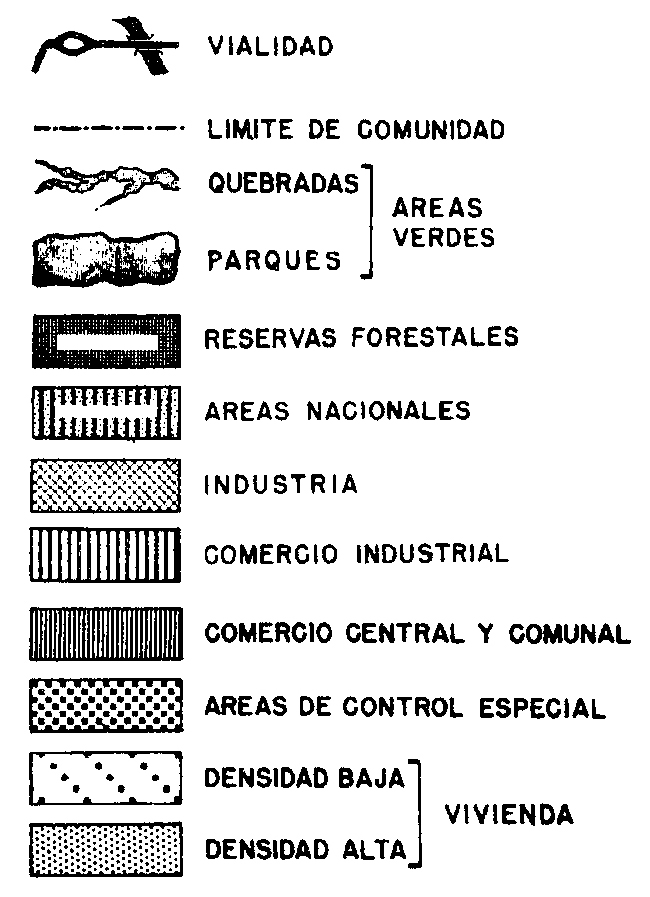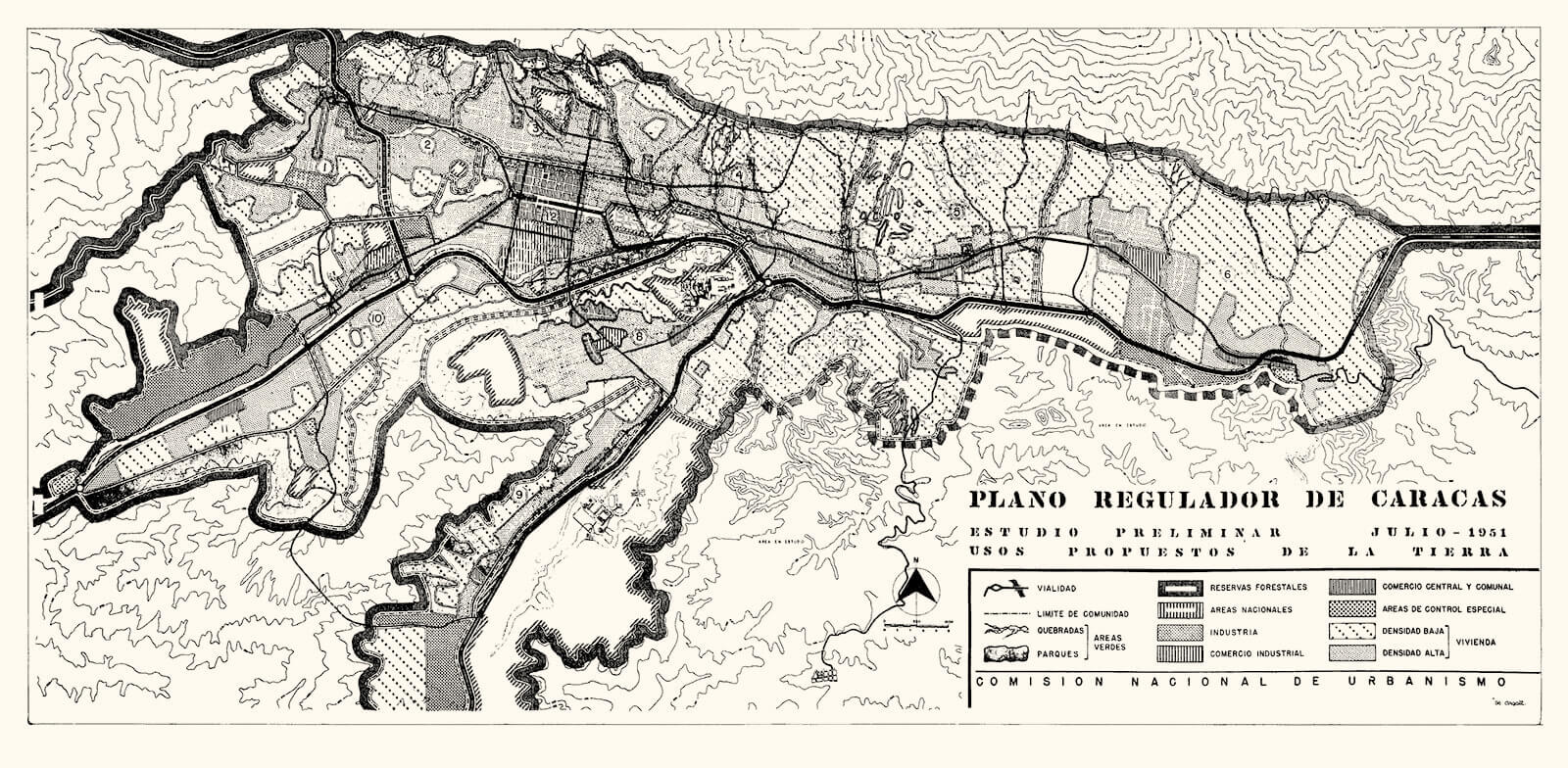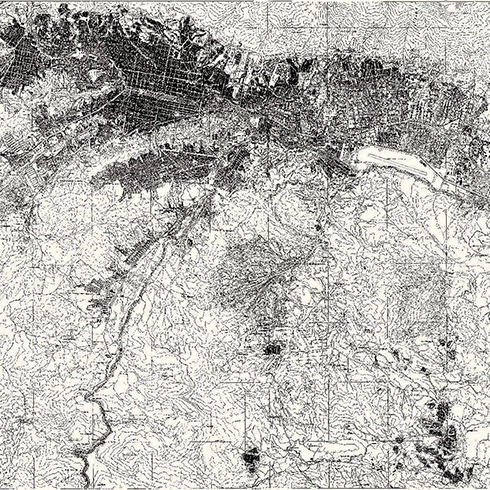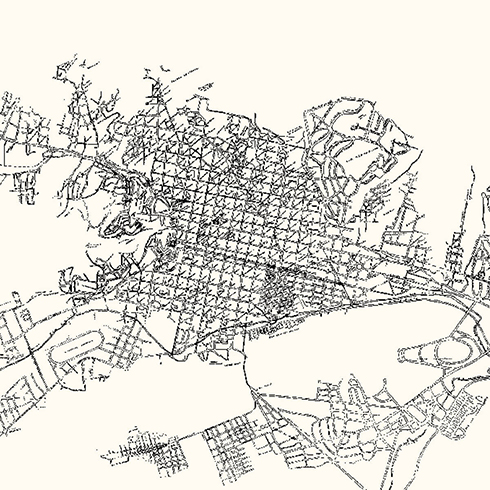Caracas regulatory plan, 1951. Landused proposed. Comisión Nacional de Urbanismo.HC-51
Rules for a destiny
The Caracas Regulator Plan, drafted by Francis Violich, Maurice Rotival and José Luis Sert, appears in 1991 as part of the work by The National Urbanism Commission.
The word «regulator» is important, since it is not a matter of reflecting, designing or imagining, what is being tried is to set the rules establishing a destiny. It was the first time that the urban problem was being faced with this vision, more interested with quantities and zonings than with formal and aesthetic ones.
This representation definitely guides an urban structure of linear growth and suburban development for the city, mainly towards the east. Rotival with this proposal, accepts the configuration of an urban structure organized from a main center and new nuclei localized in the valley and linked to it through a future system of super highways’.
The «Regulatory plans» include since the Colony’s urban growth towards the use and distribution of land between 1936 and 1950. It studies the evolution of land’s use in order to set a future for it. This apparently scientific attitude hid quite strong notions on what a city should be, the principles of modern urbanism having little to do with the urban tradition of Caracas.
The boundaries between municipalities, parishes and neighborhoods are also included. This means that the city’s structure no longer obeys to a single criterion, there are rather several structures being each of them overlapped without coinciding. The parish is something, the municipality is another thing and the neighborhood still another. This separation will weaken the citizen’s notion of the portion and the whole, and will confuse his sense of participation and belonging.
The proposals and laws resulting from this study are a definitive episode in its evolution. The city of the grid, of the block and of the integrated activities, will be substituted by means of urban legislation based on a set of buildings zoned and isolated by lateral separations. Since then Caracas had come closer to the classical Latin city’s patterns and now it will try to look like the modern Saxon models. These new urban laws make it practically impossible, and even persecute, our urban heritage. Today, half a century later, they still govern our city’s destiny. 4
CAPTION 4 Text with the cooperation of Nancy Dembo and José Rosas Vera.

HC-50




